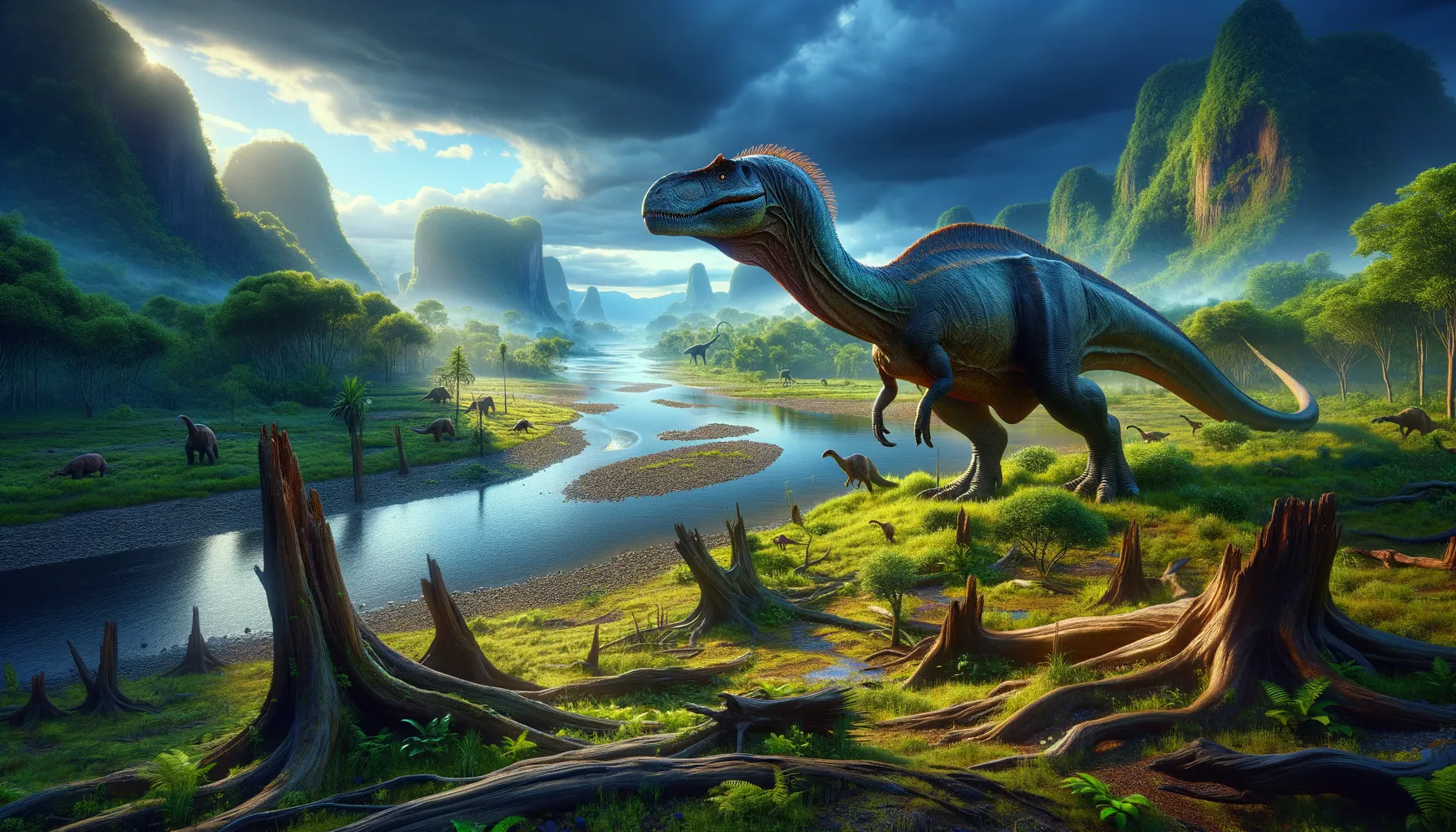
Volgatitan
Giant of ancient Russian landscapes.
Period
Cretaceous
Length
About 65 feet long from head to tail.
Height
Approximately 20 feet tall at the shoulders.
Weight
Around 15 tons, similar to modern elephants.
Volgatitan was a colossal herbivorous dinosaur belonging to the titanosaur group, known for its massive size and distinctive body shape. It roamed the Earth during the Late Cretaceous period, around 90 million years ago, inhabiting the lush, river-crossed plains of what is now modern-day Russia. Having a long neck and tail, Volgatitan's physical structure was adapted for reaching high vegetation, making it one of the largest land animals of its time.
Diet
Volgatitan was an herbivore, feasting primarily on the lush foliage available in its environment. It used its long neck to reach and consume high-growing plants.
Hunting
As an herbivore, Volgatitan did not engage in hunting. Instead, it spent much of its time foraging, using its size for protection against predators.
Environmental challenges
Volgatitan faced environmental challenges such as scarce food during dry seasons, which could affect its large dietary needs. Changes in climate and habitat could also impact its survival, leading to competition for resources. Predation, while less of a concern due to its size, could be an issue for young or sick individuals. Adapting to seasonal changes and migrating to areas with more abundant vegetation would have been crucial for its survival.
Speed
It moved slowly due to its enormous size.
Lifespan
It likely lived several decades.
First discovery
Discovered in the Saratov region of Russia in 1982.
Fun Facts
- Volgatitan is a recently discovered dinosaur species from the early Cretaceous period.
- It was found in Russia, making it one of the few titanosaurs discovered in that region.
- Volgatitan belonged to the sauropod family, known for their long necks and tails.
- Its name, Volgatitan, is derived from the Volga River, near where it was discovered.
- This dinosaur is estimated to have been about 8 to 10 meters long.
- Volgatitan lived approximately 125 million years ago, during a time when large herbivorous dinosaurs were thriving.
- Its discovery in 2018 helped fill gaps in our understanding of the distribution of titanosaurs.
Growth and Development
As a titanosaur, Volgatitan would have had a long growth period, gradually reaching its enormous size. Young Volgatitans probably looked up to adults, both in mentorship and for protection. Growth rates could vary based on environmental conditions and resource availability. Their bones, robust and strong, allowed them to support massive body structures as they matured.
Habitat
Volgatitan lived in what is now modern-day Russia, with habitats consisting of river-crossed plains providing an abundance of plants. Areas with diverse vegetation were ideal, supplying the necessary food to support such massive creatures. The rich floodplains and surrounding forests were home to Volgatitan and a variety of other dinosaurs. These environments offered both sustenance and the resources needed for survival over the Cretaceous period.
Interaction with other species
Volgatitan coexisted with various herbivorous and carnivorous dinosaurs of the Cretaceous period. Being herbivorous, it competed with other plant-eaters for food resources, leading to shifts in grazing patterns. Predatory dinosaurs may have posed a threat to vulnerable young Volgatitans or injured adults. The presence of smaller animals and insects influenced its ecosystem, contributing to the dynamic food web around it.
Natural lifespan
Volgatitan likely lived for 70 to 100 years.
Reproduction
Volgatitan reproduced by laying eggs, as suggested by related titanosaurs’ fossils. Females likely laid clusters of eggs in nesting sites, often in soft ground or sand. Their reproductive habits were similar to modern-day large reptiles, where care of the young was minimal after hatching. Egg size and development would vary, with survival chances increased by nesting in numbers.
Social behaviour
Volgatitan might have lived in small herds or groups, providing social structure and protection. Herd living facilitated finding and accessing food resources more effectively across areas. Interactions within groups could have included grooming and protective behaviors. Their migration patterns might have been influenced by groups, adapting to environmental changes together.
Fossil locations
Fossils of Volgatitan have been found primarily in the Saratov region of Russia, providing insights into its anatomy and existence. The discovery site offers crucial evidence of Cretaceous ecosystems and the environment it inhabited. These fossil findings have aided paleontologists in understanding not just Volgatitan, but the broader ecosystem dynamics of that era.
